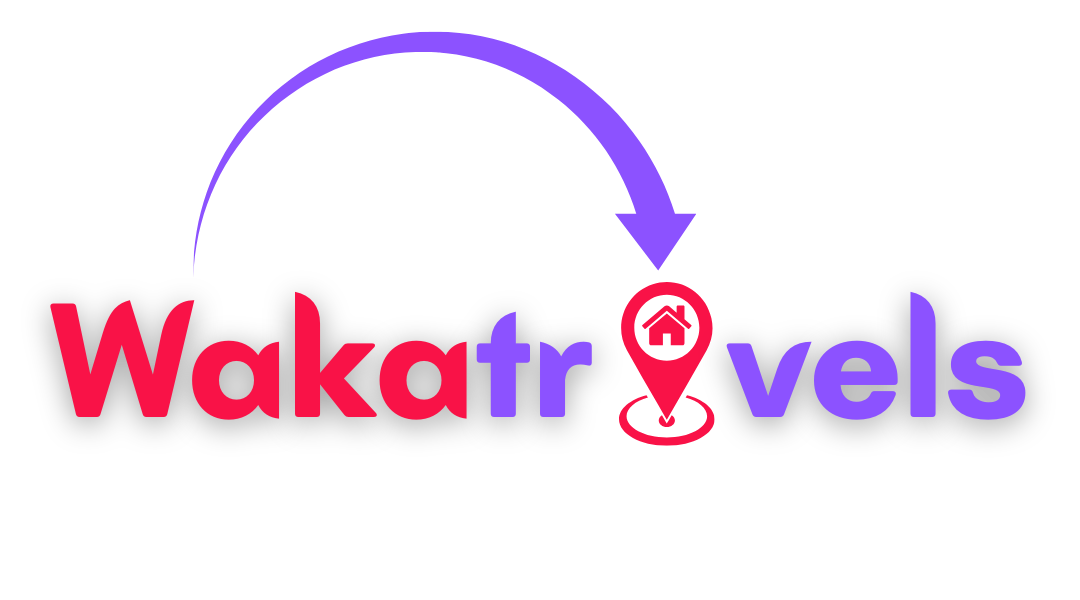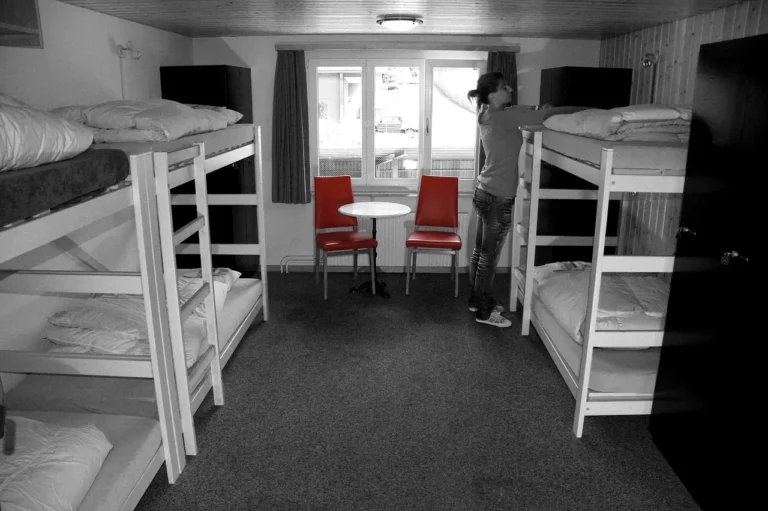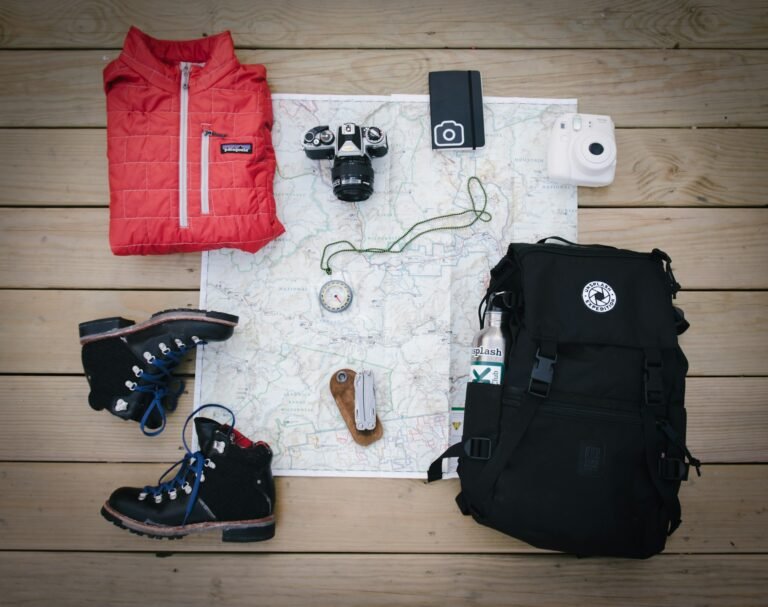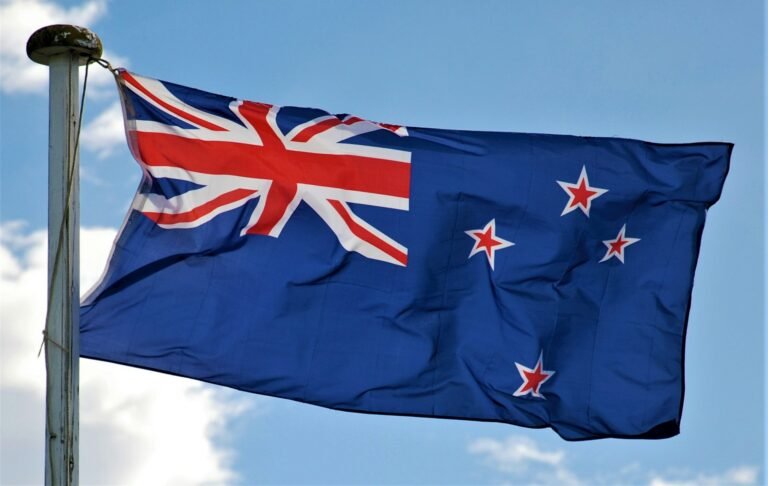
Have you ever caught yourself daydreaming about escaping the daily grind, packing your bags, and setting up a new life somewhere your money actually stretches? I know I have. After spending years researching and visiting affordable destinations around the world, I’ve discovered something amazing: $3,000 a month—a budget that might feel tight in many Western countries—can actually provide a life of luxury elsewhere.
Whether you’re a digital nomad seeking your next base, a retiree looking to maximize your pension, or simply someone craving a change of scenery without breaking the bank, this guide reveals the five countries where $3,000 monthly can truly let you live large.
From beachfront apartments to daily massages, private transportation, and dining out whenever you please—these destinations offer the kind of lifestyle that would cost triple (or more) back home. Let’s dive into the countries where your dollars transform into a lifestyle upgrade you might have thought was out of reach.
What Does “Living Large” Really Mean on $3,000?
Before we explore specific countries, let’s clarify what “living large” on $3,000 monthly actually means. We’re talking about:
- Renting a spacious, well-located apartment or house
- Eating out frequently at good restaurants
- Hiring help (cleaning, laundry, gardening)
- Enjoying regular massages, spa treatments, or other luxuries
- Having disposable income for entertainment and travel
- Accessing quality healthcare at affordable rates
- Living comfortably without constantly checking your bank balance
In the countries I’m about to share, this lifestyle is absolutely achievable on $3,000 per month—often with money left over for savings or additional splurges.

1. Vietnam: Southeast Asian Gem with Unbeatable Value
Monthly budget breakdown for Vietnam:
- Luxury apartment rental: $500-800
- Eating out (including high-end): $400-500
- Transportation: $100
- Entertainment/extras: $300-500
- Healthcare/insurance: $100-200
- Utilities and internet: $100-150
- Household help: $150-200
- Total: $1,650-2,450
Vietnam tops my list for affordable luxury living with remarkable value for money. I’ll never forget my first month in Hanoi, when I realized my elegant one-bedroom apartment in the trendy Tay Ho district cost less than what I’d been paying for a tiny studio back home. With its rich culture, breathtaking landscapes, and rapidly developing infrastructure, Vietnam offers an exciting blend of tradition and modernity.
Best Cities in Vietnam for Expats
Hanoi: The capital city offers a more traditional Vietnamese experience with French colonial architecture, countless lakes, and vibrant street life. The Old Quarter buzzes with energy while upscale districts like Tay Ho provide comfortable living for expats.
Ho Chi Minh City: More modern and cosmopolitan, HCMC (formerly Saigon) offers excellent restaurants, shopping, and nightlife. Districts 2 and 7 are particularly popular with expats for their international amenities and spacious housing options.
Da Nang: For beach lovers, this central Vietnam city provides the perfect balance—modern conveniences with stunning beaches and the charming UNESCO-listed Hoi An just 30 minutes away.
Why Vietnam Works on $3,000
The cost of daily living in Vietnam is remarkably low. A delicious meal at a local restaurant might cost $2-3, while even upscale dining rarely exceeds $30 per person. Transportation is affordable whether you’re hiring a private driver ($15-20 per day) or using ride-sharing apps.
Healthcare deserves special mention—with international-standard hospitals and clinics offering services at a fraction of Western prices. A consultation with a specialist might cost $25-50, compared to hundreds back home.
Insider Tip: Vietnam’s visa situation continues to evolve. The recent electronic visa system has made entry easier, but for long-term stays, you’ll want to investigate business visas or work with local agencies who can assist with longer visa options.

2. Mexico: Affordable Paradise Close to Home
Monthly budget breakdown for Mexico:
- Upscale apartment/home rental: $700-1,000
- Dining out: $400-600
- Transportation: $150-200
- Entertainment/extras: $300-500
- Healthcare/insurance: $100-200
- Utilities and internet: $100-150
- Household help: $200-300
- Total: $1,950-2,950
For Americans and Canadians looking for affordable living without straying too far from home, Mexico offers an unbeatable combination of proximity, culture, and value. Having spent several months living in different Mexican cities, I can attest to the incredible lifestyle possible here on a $3,000 budget.
Best Mexican Cities for Luxury on a Budget
Mexico City: The sprawling capital offers world-class museums, parks, and dining at a fraction of the cost you’d expect. Neighborhoods like Roma, Condesa, and Polanco provide upscale living with beautiful apartments and excellent amenities.
Playa del Carmen: Caribbean living at its finest, with beautiful beaches, turquoise waters, and a cosmopolitan atmosphere. The cost of living is higher than in some inland locations but still allows for luxury on $3,000.
Merida: The safest city in Mexico offers colonial charm, cultural richness, and proximity to both beaches and Mayan ruins. Housing costs are particularly reasonable here.
San Miguel de Allende: This picturesque colonial town has become a haven for expat artists and retirees, offering beautiful architecture, ideal climate, and a strong community feel.
Why Mexico Works on $3,000
Mexico’s cost of living allows your dollars to stretch incredibly far. Renting a stunning colonial home or modern apartment with twice the space of what you’d get in the U.S. is easily achievable. Eating out becomes an everyday luxury rather than an occasional treat—even high-end restaurants cost a fraction of their U.S. equivalents.
The convenience factor cannot be overlooked. Direct flights to major U.S. cities, familiar stores, and widespread English in tourist areas make Mexico an easy transition for first-time expats.
Insider Tip: Mexico’s healthcare system offers excellent private hospitals at reasonable prices. Many expats opt for local insurance that costs $1,000-2,000 annually—far less than U.S. insurance while providing comparable or better care.
3. Portugal: European Living Without the European Price Tag
Monthly budget breakdown for Portugal:
- Modern apartment rental: $800-1,200
- Dining out: $400-600
- Transportation: $100-150
- Entertainment/extras: $300-500
- Healthcare/insurance: $150-250
- Utilities and internet: $150-200
- Household help: $300-400
- Total: $2,200-3,300
If your dream is European living but you’ve been deterred by the continent’s typically high costs, Portugal offers a remarkable exception. As the most affordable country in Western Europe, Portugal provides the European lifestyle—complete with historic cities, beautiful beaches, and excellent wine—at prices that make $3,000 go remarkably far.
Best Portuguese Cities for Affordable Luxury
Lisbon: The vibrant capital city offers charming historic neighborhoods, a thriving cultural scene, and excellent restaurants. While it’s Portugal’s most expensive city, $3,000 still affords a very comfortable lifestyle here.
Porto: More affordable than Lisbon with equal charm, Porto features stunning river views, historic architecture, and proximity to wine country. Your budget stretches even further here.
Algarve: Portugal’s southern coast provides spectacular beaches, golf courses, and a large expat community. Winter months are particularly budget-friendly.
Why Portugal Works on $3,000
Portugal’s cost of living sits approximately 30-40% lower than other Western European countries. A nice meal out might cost $15-25 per person (compared to $40+ in Paris or London), while a cappuccino at a café runs around $2.
Healthcare deserves special mention as Portugal’s public system ranks among the world’s best, and private insurance costs a fraction of U.S. prices ($50-100 monthly for comprehensive coverage).
The D7 visa (passive income visa) makes Portugal particularly attractive for those living on pensions or remote income, providing a relatively straightforward path to residency and eventually citizenship.
Insider Tip: Consider cities beyond Lisbon for even better value. While the capital has seen rising prices due to tourism and foreign investment, smaller cities like Coimbra, Braga, and Setúbal offer authentic Portuguese living at significantly lower costs.
4. Thailand: Southeast Asian Luxury Living
Monthly budget breakdown for Thailand:
- Luxury condo rental: $500-800
- Dining out (including high-end): $400-600
- Transportation: $100-150
- Entertainment/extras: $300-500
- Healthcare/insurance: $100-200
- Utilities and internet: $100-150
- Household help: $200-300
- Total: $1,700-2,700
Thailand has long been the gold standard for affordable luxury living in Southeast Asia. The famous “Thai smile” extends beyond the friendly locals to your bank account as well—you’ll find yourself grinning at how far your money stretches here. Having spent considerable time in different parts of Thailand, I can confirm that $3,000 monthly provides a genuinely luxurious lifestyle that would cost multiples of that in Western countries.
Best Thai Cities for Expats
Chiang Mai: The northern cultural capital offers a perfect blend of traditional Thai culture and modern amenities. The massive expat community here has created an infrastructure that makes long-term living easy and affordable.
Bangkok: Thailand’s buzzing capital provides world-class shopping, dining, and entertainment alongside efficient public transportation and excellent healthcare. While more expensive than other Thai cities, $3,000 still goes very far here.
Hua Hin: This beach resort town has become popular with retirees for its slower pace, beautiful beaches, and golf courses. The large expat community means plenty of international amenities.
Why Thailand Works on $3,000
Daily expenses in Thailand remain remarkably low. Street food might cost $1-2 per meal, while even upscale restaurants rarely exceed $30 per person. Luxuries like massages ($10-15/hour) and household help ($10-15/day) transform from occasional splurges to regular indulgences.
Thai healthcare stands out globally for its quality-to-cost ratio. International-standard hospitals provide excellent care at 20-30% of Western prices, making medical tourism a major industry here.
Insider Tip: Thailand’s visa situation requires planning for long-term stays. The Special Tourist Visa allows stays up to 270 days, while the Elite Visa program offers 5-20 year options for those willing to make an upfront payment ($15,000+). Retirement visas are available for those over 50 with proof of income or savings.
5. Indonesia: Island Paradise on a Budget
Monthly budget breakdown for Indonesia:
- Villa or luxury apartment rental: $500-800
- Dining out: $300-500
- Transportation: $100-200
- Entertainment/extras: $300-500
- Healthcare/insurance: $100-200
- Utilities and internet: $100-150
- Household help: $150-250
- Total: $1,550-2,600
Indonesia—particularly Bali—has become synonymous with digital nomad living, and for good reason. The “Island of the Gods” offers stunning natural beauty, spiritual richness, and a cost of living that makes $3,000 feel like a king’s ransom. I’ll never forget touring a stunning villa with private pool in Ubud that rented for less than what I’d paid for a basic one-bedroom apartment back home.
Best Indonesian Locations for Expats
Bali (Ubud): The cultural heart of Bali offers rice field views, a thriving wellness scene, and a strong digital nomad community. Housing here provides exceptional value.
Bali (Canggu/Seminyak): These beachside areas have exploded in popularity with digital nomads and expats seeking surf, sand, and a vibrant social scene alongside modern amenities.
Jakarta: Indonesia’s capital offers big-city living at a fraction of Western costs, though many expats prefer Bali’s more relaxed lifestyle.
Why Indonesia Works on $3,000
The value proposition in Indonesia is hard to beat. Private villas with pools can be found for $500-800 monthly in Bali, while household help costs around $100-200 monthly for regular cleaning and cooking. Transportation is remarkably affordable whether renting a scooter ($50-70/month) or using ride-hailing apps.
The lifestyle upgrade possible here is significant—think daily massages ($8-15/hour), personal yoga instructors ($10-20/session), and chef-prepared meals at home ($10-15 including groceries).
Insider Tip: Indonesia’s visa policies have become more accommodating recently. The B211A “business” visa allows stays of up to 6 months with extensions. For longer-term options, the new Digital Nomad Visa is worth exploring, as it allows stays of up to 5 years without taxation for those earning income from outside Indonesia.
Comparing Cost of Living: The Numbers Breakdown
To give you a clearer picture of how far $3,000 monthly goes in each country, here’s a comparative breakdown of common expenses:
| Expense | Vietnam | Mexico | Portugal | Thailand | Indonesia |
| 1BR Luxury Apt/Month | $500-800 | $700-1,000 | $800-1,200 | $500-800 | $500-800 |
| Dinner for Two (Nice Restaurant) | $20-40 | $30-60 | $40-70 | $20-50 | $20-40 |
| Monthly Transportation | $50-100 | $100-200 | $50-100 | $50-100 | $50-150 |
| Cappuccino | $1.50-2.50 | $2-3 | $1.50-2.50 | $2-3 | $2-3 |
| Gym Membership | $20-50 | $30-60 | $30-60 | $30-60 | $20-50 |
| Maid Service (Monthly) | $100-200 | $200-300 | $300-400 | $200-300 | $150-250 |
| Doctor’s Visit | $20-40 | $30-50 | $50-80 | $20-40 | $20-40 |
Practical Considerations Before Making the Move
While living abroad on $3,000 monthly can provide an incredible lifestyle upgrade, there are important factors to consider beyond pure cost:
Visa Requirements
Each country has different visa options for long-term stays:
- Vietnam: Typically requires visa runs or business visa arrangements
- Mexico: 180-day tourist visa easily renewable with border runs
- Portugal: D7 visa offers path to residency for those with passive income
- Thailand: Retirement visa available for those over 50; others may need visa runs
- Indonesia: New digital nomad visa options becoming available
Healthcare Considerations
Quality healthcare is essential for long-term living abroad:
- Vietnam: Excellent private hospitals in major cities; international insurance recommended
- Mexico: High-quality private healthcare at reasonable prices; local insurance available
- Portugal: Access to excellent public healthcare plus affordable private options
- Thailand: World-class medical tourism destination with international-standard hospitals
- Indonesia: Good private hospitals in major cities; evacuation insurance recommended for remote areas
Banking and Taxes
Managing your money overseas requires planning:
- Consider local bank accounts for day-to-day expenses
- Research tax obligations both in your home country and abroad
- Set up reliable methods for transferring money internationally
- Research cryptocurrency options where appropriate
Insider Tip: Services like Wise (formerly TransferWise) offer much better exchange rates than traditional banks for moving money internationally.
Hidden Costs to Consider
When budgeting for overseas living, watch out for these often-overlooked expenses:
Visa Runs and Immigration Costs
Depending on your visa situation, you might need to leave the country periodically to renew your status—factor in these travel costs.
Healthcare Insurance
While treatment costs are lower abroad, comprehensive international health insurance is still recommended and can cost $1,000-2,000 annually.
Home Country Ties
Consider costs like storage for belongings, tax preparation, maintaining a mailing address, or periodic visits home.
Initial Setup Costs
The first few months typically require higher spending for deposits, essential purchases, and getting settled.
Remote Work Considerations
For digital nomads and remote workers, reliable infrastructure is crucial:
Internet Reliability
- Vietnam: Generally good in major cities; 4G backup recommended
- Mexico: Excellent in popular expat areas; fiber connections widely available
- Portugal: High-quality connections throughout the country
- Thailand: Very good in urban areas; co-working spaces abundant
- Indonesia: Variable quality; Bali has many co-working options
Co-Working Spaces
All five countries have embraced digital nomad culture with excellent co-working options typically ranging from $100-200 monthly for unlimited access.
Insider Tip: Before committing to long-term housing, test the internet connection at different times of day and have a backup solution (like a mobile hotspot) ready for important calls or deadlines.
Who Thrives Living Abroad on $3,000?
While a $3,000 monthly budget enables luxurious living in these countries, this lifestyle works particularly well for:
- Digital nomads with location-independent income
- Early retirees looking to stretch their savings
- Freelancers seeking lower overhead and better quality of life
- Remote employees working for companies in higher-cost countries
- Entrepreneurs bootstrapping businesses while minimizing expenses
The common thread among successful expats is adaptability and openness to new experiences. Living abroad rewards those willing to embrace local customs and lifestyle modifications.
Making the Decision: Is Overseas Living Right for You?
Living abroad offers tremendous financial advantages, but money shouldn’t be the only consideration. Ask yourself:
- How important is proximity to family and friends?
- Are you comfortable in places where English isn’t widely spoken?
- Can your work be done remotely and across time zones?
- Do you adapt well to different cultures and customs?
- How important are familiar conveniences and products?
For those with the right mindset, living internationally can provide not just financial freedom but a profound life enrichment that transcends monetary value.
Getting Started: Your Next Steps
If living large on $3,000 monthly in these affordable countries appeals to you, here’s how to move forward:
- Research thoroughly – Beyond this article, join expat Facebook groups and forums for recent insights
- Plan a reconnaissance trip – Spend at least 2-4 weeks in your top location choices
- Set up your remote work situation – Ensure reliable income and technical capabilities
- Address healthcare needs – Secure international insurance and research local options
- Develop a visa strategy – Consult with immigration specialists if necessary
- Create a realistic budget – Include all hidden and startup costs
- Start downsizing – Begin the process of minimizing possessions
Remember that the best approach is often to start with a 3-6 month trial period rather than making an immediate permanent move.
Conclusion: Your Affordable Luxury Lifestyle Awaits
Living abundantly on $3,000 monthly isn’t just possible—in these five countries, it’s a reality for thousands of expats who’ve discovered the secret of geographic arbitrage. From beachfront living in Bali to colonial charm in Mexico, these destinations offer a lifestyle upgrade that would require multiples of this budget in North America or Western Europe.
As someone who has experienced this transformation firsthand, I can tell you that the benefits extend far beyond financial savings. The cultural richness, natural beauty, and fresh perspectives these countries offer create a life that feels both luxurious and meaningful.
Whether you’re looking to retire early, save aggressively while working remotely, or simply experience a different way of living, these five countries offer a path to living remarkably well on a moderate budget.
Ready to explore your options for living large on $3,000? The first step is deciding which of these affordable paradises calls to you most strongly—and then booking that reconnaissance trip to see it firsthand.
Frequently Asked Questions About Living Large on $3,000 Monthly
Q: Which countries can I live comfortably in on a $3,000 monthly budget? A: You can live very comfortably in Southeast Asian countries (Vietnam, Thailand, Indonesia), Latin American countries (Mexico, Colombia, Ecuador), and even some European countries (Portugal, Bulgaria). The top 5 countries where $3,000 goes furthest are Vietnam, Mexico, Portugal, Thailand, and Indonesia.
Q: What are the best affordable countries for digital nomads or remote workers? A: For digital nomads, the best affordable countries combine low cost of living with good internet infrastructure and digital nomad communities. Bali (Indonesia), Chiang Mai (Thailand), Mexico City/Playa del Carmen (Mexico), and Lisbon (Portugal) consistently rank highest for value, amenities, and community.
Q: How much does it cost to live in Southeast Asian countries like Thailand or Vietnam? A: In Thailand and Vietnam, a comfortable lifestyle including a modern apartment, regular dining out, and entertainment typically costs $1,500-2,000 monthly for a single person. A luxury lifestyle with a high-end apartment, frequent nice dining, and household help falls within $2,000-2,500 monthly—well under the $3,000 budget.
Q: Can a couple live well on $3,000 per month in Latin America? A: Yes, a couple can live very well in most Latin American countries on $3,000 monthly. In Mexico, for example, a couple can afford a nice two-bedroom apartment in a good area, regular dining out, healthcare, and entertainment within this budget. The same applies to countries like Colombia, Ecuador, and Panama.
Q: What are the cheapest countries with good quality of life? A: Vietnam, Thailand, Indonesia, Mexico, and Portugal offer the best balance of affordability and quality of life. These countries provide modern amenities, good healthcare options, rich cultural experiences, and comfortable living at a fraction of Western costs.
Q: Is $3,000 enough to cover rent, food, and entertainment in affordable countries? A: Absolutely. In all five countries profiled, $3,000 easily covers rent for a modern apartment, regular dining out (including some high-end meals), transportation, entertainment, healthcare, and even luxuries like household help and regular spa treatments.
Q: Which countries offer the best balance of low cost of living and safety? A: Portugal stands out for exceptional safety combined with reasonable costs. Vietnam and Thailand are generally very safe for expats in popular areas. Mexico varies by region, with areas like Merida and San Miguel de Allende being particularly safe. Research specific cities and neighborhoods, as safety can vary significantly within countries.
Q: How does healthcare compare in affordable countries on this budget? A: Many affordable countries offer excellent private healthcare at a fraction of U.S. prices. Thailand and Mexico are renowned medical tourism destinations with international-standard hospitals. Portugal offers access to its high-quality public system. On a $3,000 budget, comprehensive private healthcare is easily affordable in all five countries profiled.
Q: Are there good internet and infrastructure options for remote work in these countries? A: Yes. Major cities in all five countries offer reliable high-speed internet and co-working spaces. Portugal has excellent infrastructure throughout. Thailand, Mexico, and Vietnam have very good connectivity in expat areas. Indonesia (particularly Bali) has numerous digital nomad-focused accommodations and workspaces with backup power and internet.
Q: What are the top affordable cities within these countries to consider? A: Top affordable cities include Chiang Mai and Bangkok (Thailand); Hanoi and Da Nang (Vietnam); Mexico City, Merida, and Playa del Carmen (Mexico); Lisbon and Porto (Portugal); and Ubud and Canggu in Bali (Indonesia). Each offers different advantages regarding climate, amenities, expat community, and specific costs.






Thank you for the auspicious writeup. It actually was a
enjoyment account it. Glance complicated to more brought agreeable from
you! However, how can we be in contact?
You can get to us through contact page or send us an email at info@wakatravels.com